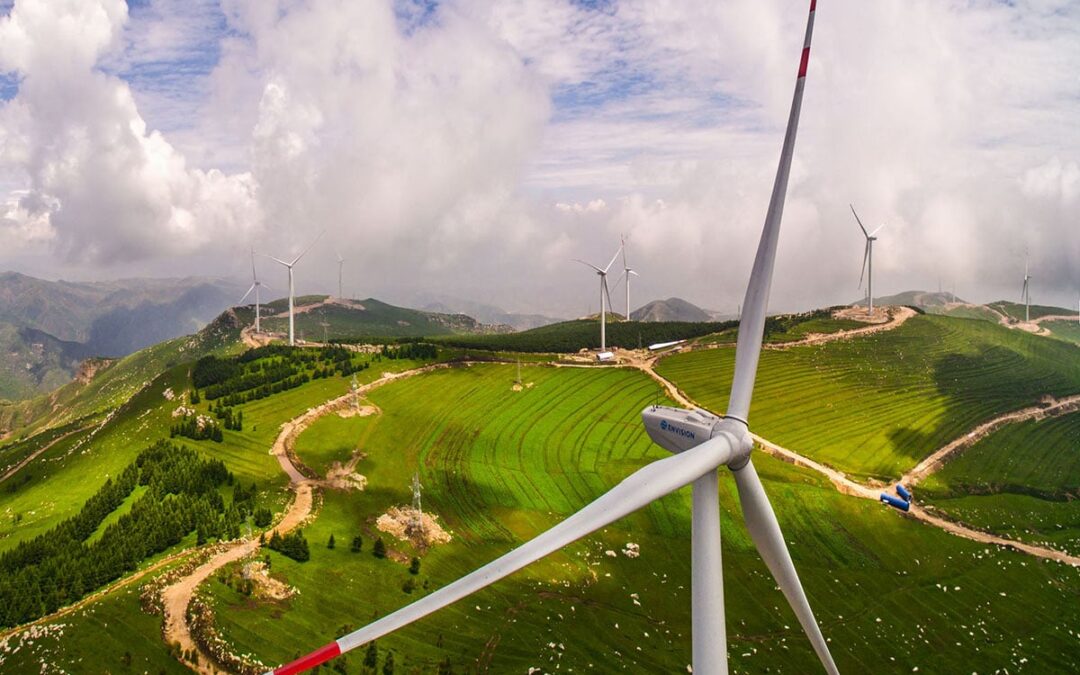Dear EarthTalk: Which countries currently lead the world in total clean energy generation — and is the current ranking order expected to shift anytime soon? — Charles Jensen, Detroit, MI
Clean energy generation — or energy generation without the output of harmful greenhouse gases — has become an increasingly hot topic in today’s race for productivity and the growing global emphasis on eco-consciousness. Some of the most widely used forms of clean energy are solar, wind and biofuel. Other expanding clean energy sources include hydroelectric power and geothermal energy, according to Constellation. Constellation also deems nuclear power to be a “clean” energy, which many would dispute.
Regarding clean energy production by country, it is vital to consider that while China leads the world in clean energy production, generating an astounding 951 terawatt-hours in the first quarter of 2025 alone (with the United States following at about 907 terawatt-hours/year in 2023), China and the U.S. do not have the highest proportion of clean energy to total energy generation when compared to other nations. Iceland, Norway, Paraguay and Brazil lead in having the majority of their total energy production come from clean energy sources, such as geothermal energy in Iceland and hydroelectric power in Norway.
So, how are the U.S. and China the leaders in clean energy production despite clean energy being a smaller portion of their overall energy generation? The answer lies in both nations’ large-scale demand for energy due to their size, population and productive efficiency.
While clean energy makes up roughly 30 percent of U.S. energy production, with the total energy production coming in at about 102.83 quadrillion British thermal units (quads) in 2023, the sheer volume of clean energy production from the two countries is larger than any other nation. China’s clean energy production makes up about 38 percent of its total energy production, placing it just below the global average of 41 percent and the U.S. even lower at 30 percent as mentioned above.
Other countries are able to make the complete or nearly total shift toward using solely clean energy due to their relatively smaller size — both in population and land — as well as having relatively less demand for energy. Albania, Bhutan, Nepal and Lesotho utilize hydroelectric power without needing to use coal or natural gas because their demand for energy is so small that their existing renewable resources are able to meet their needs. With factors like population size and energy demand unlikely to decrease in China and the U.S., the current rankings of clean energy production will most likely not shift. In fact, according to Lauri Myllyvirta, lead analyst at the Centre for Research on Energy and Clean Air (CREA), “the [clean energy] industry is now a key part of China’s wider economic and industrial development.”
To advocate for the spread of clean energy, reach out to your local legislators and understand the rules surrounding local energy generation facilities, support plans for the creation of clean energy facilities in your area, and emphasize the transition from traditional to clean energy in your own life.
CONTACTS: The 10 countries that produce the world’s cleanest electricity, https://www.energymonitor.ai/sectors/power/the-top-ten-cleanest-power-grids-countries/; China continues to lead the world in wind and solar, https://globalenergymonitor.org/report/china-continues-to-lead-the-world-in-wind-and-solar-with-twice-as-much-capacity-under-construction-as-the-rest-of-the-world-combined/.
EarthTalk® is produced by Roddy Scheer & Doug Moss for the 501(c)3 nonprofit EarthTalk. See more at https://emagazine.com. Send questions to question@earthtalk.org.
Find holistic Yoga Practitioners in the Spirit of Change online Alternative Health Directory.
RELATED ARTICLES:
Reports Of ‘Breakthrough’ In Fusion Power Fuels Hopes Of Major Clean Energy Progress
Clean Energy Justice: Stories from the Front Lines of Defense


Recent Comments